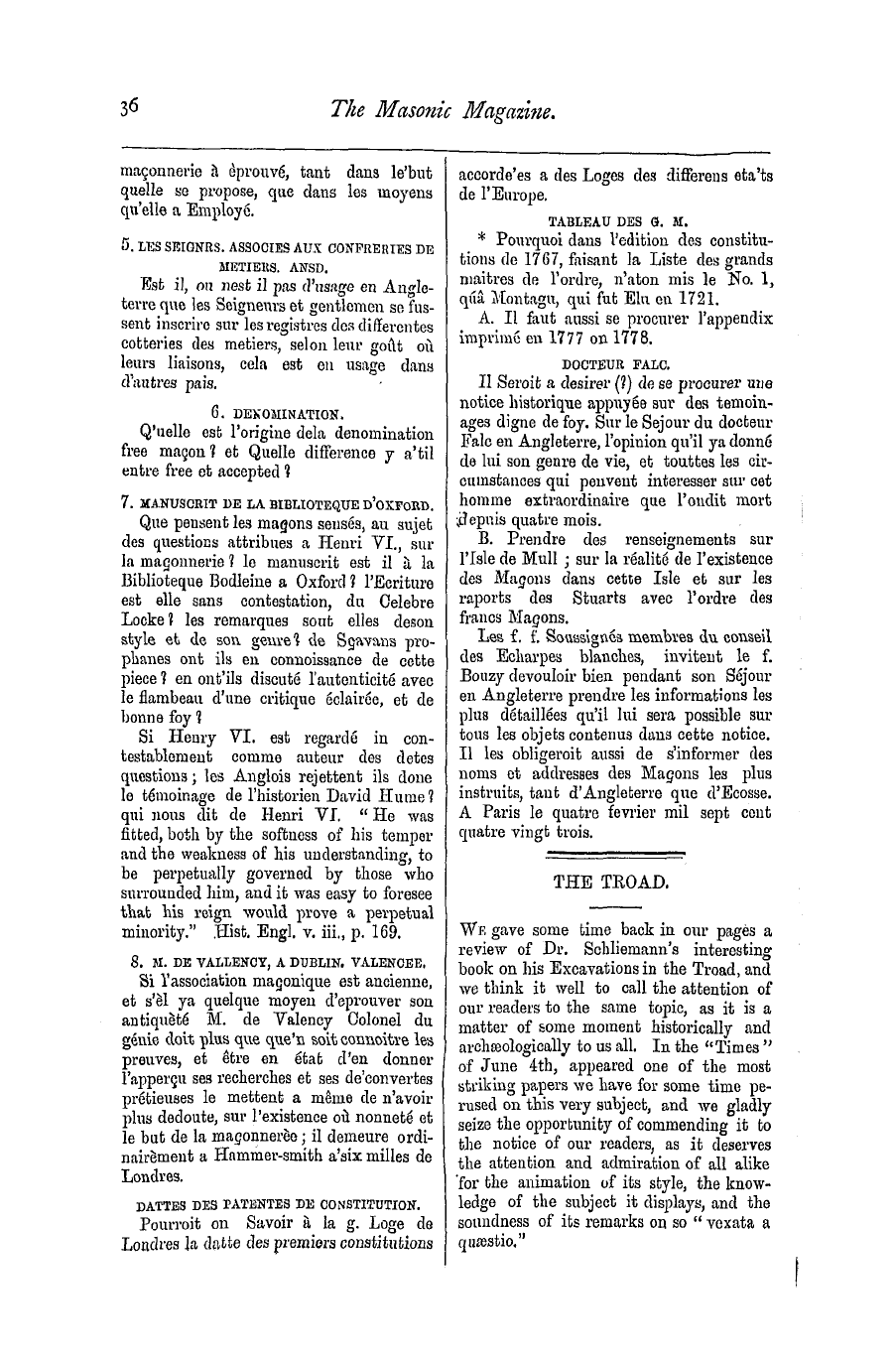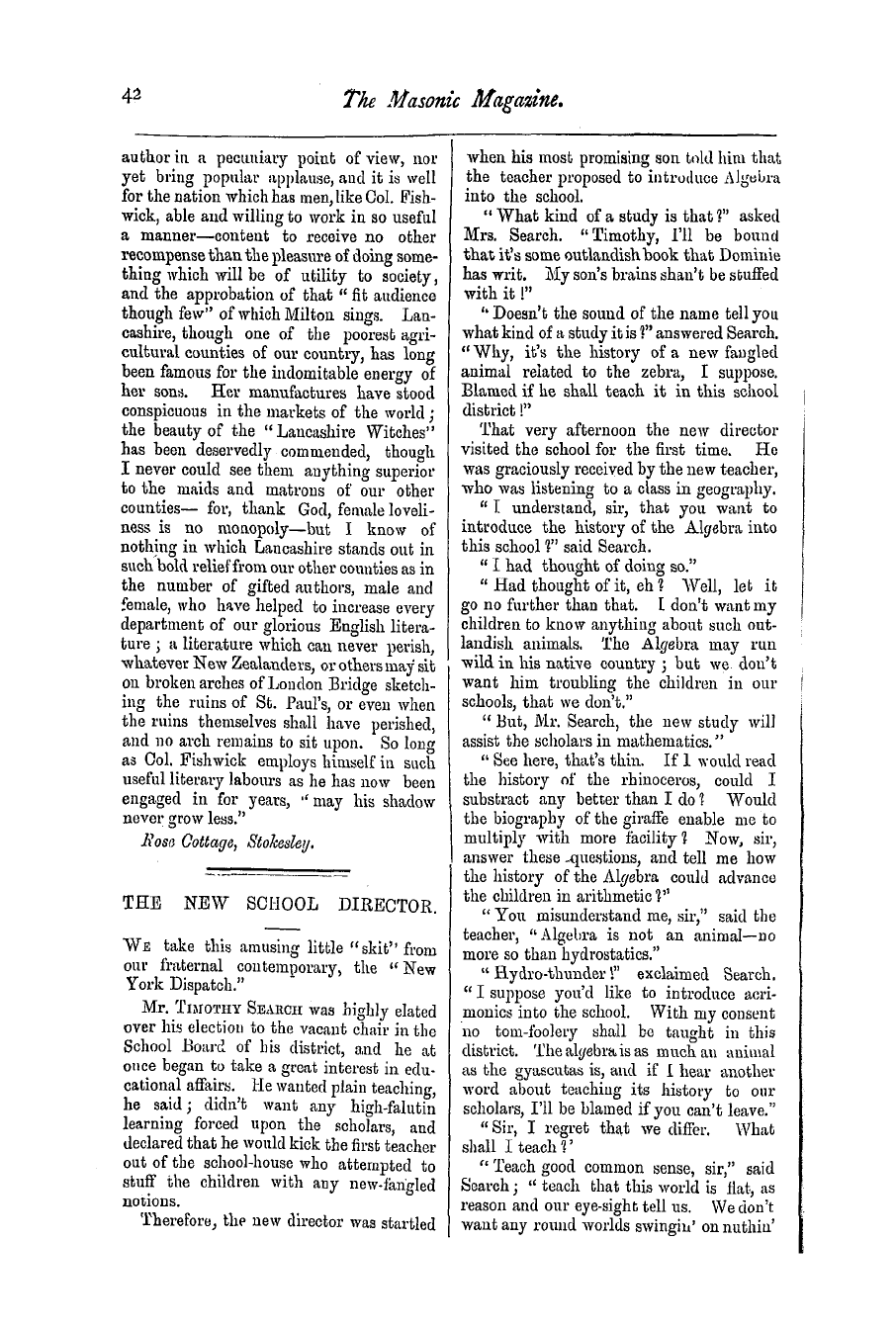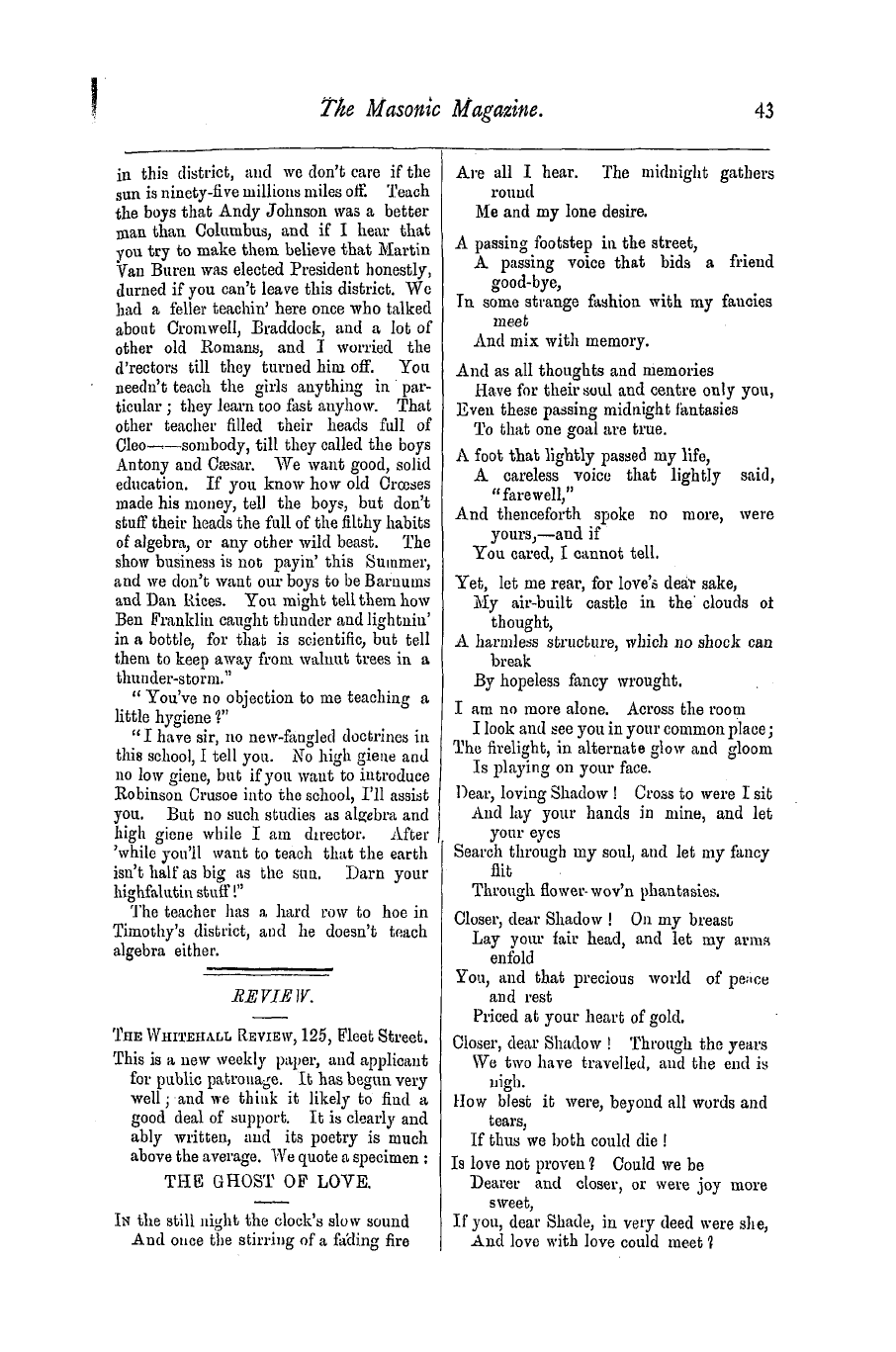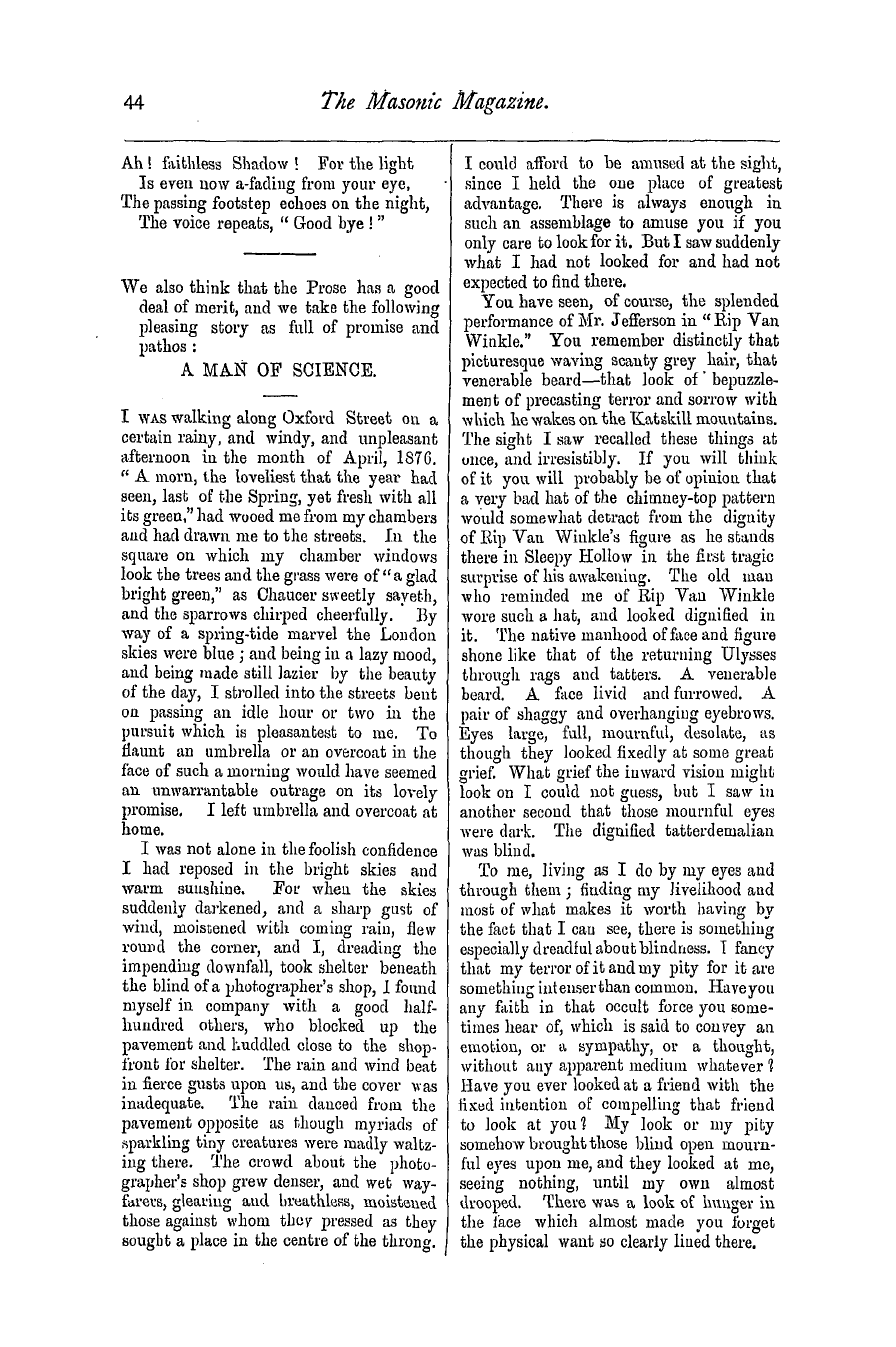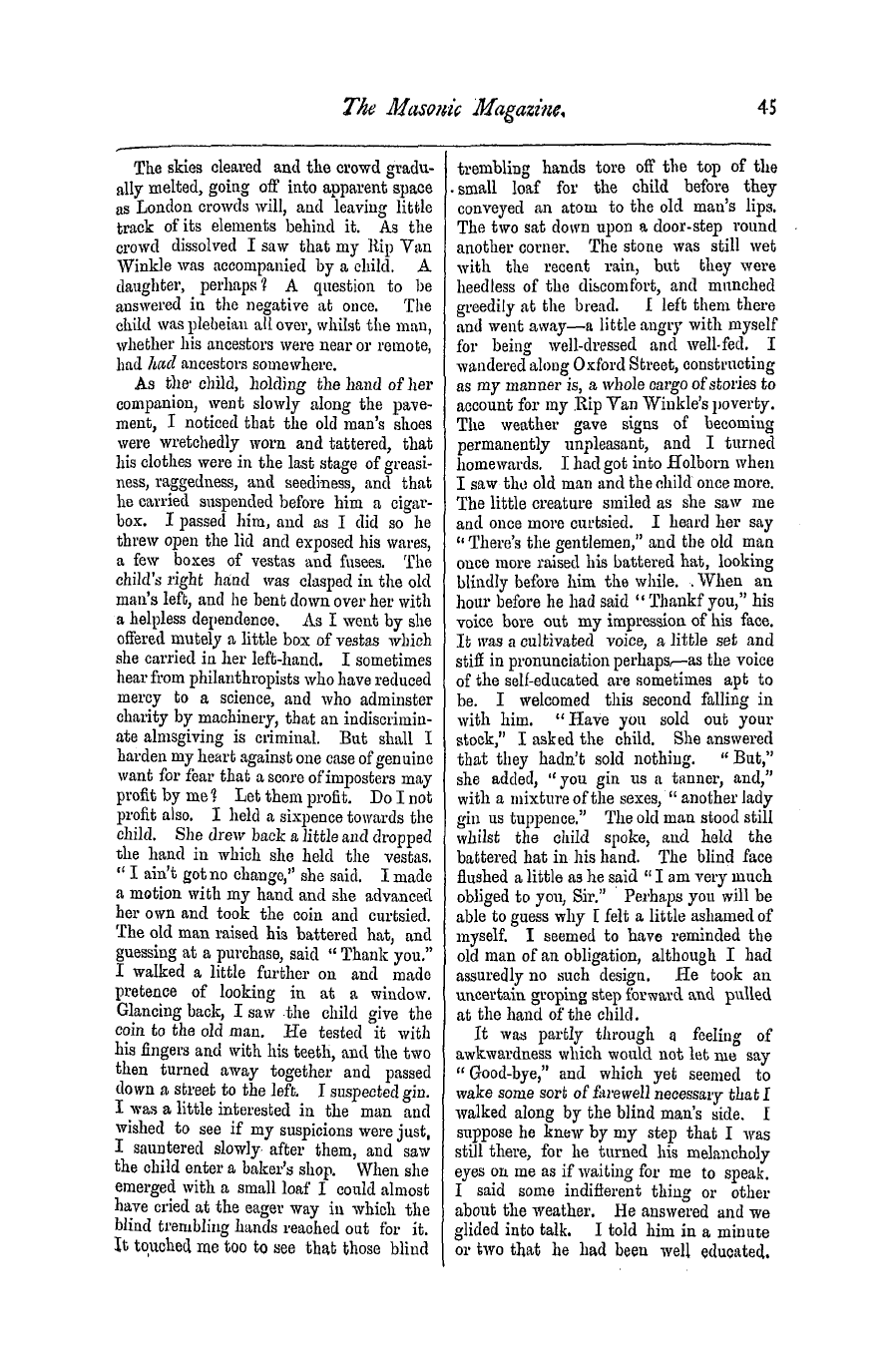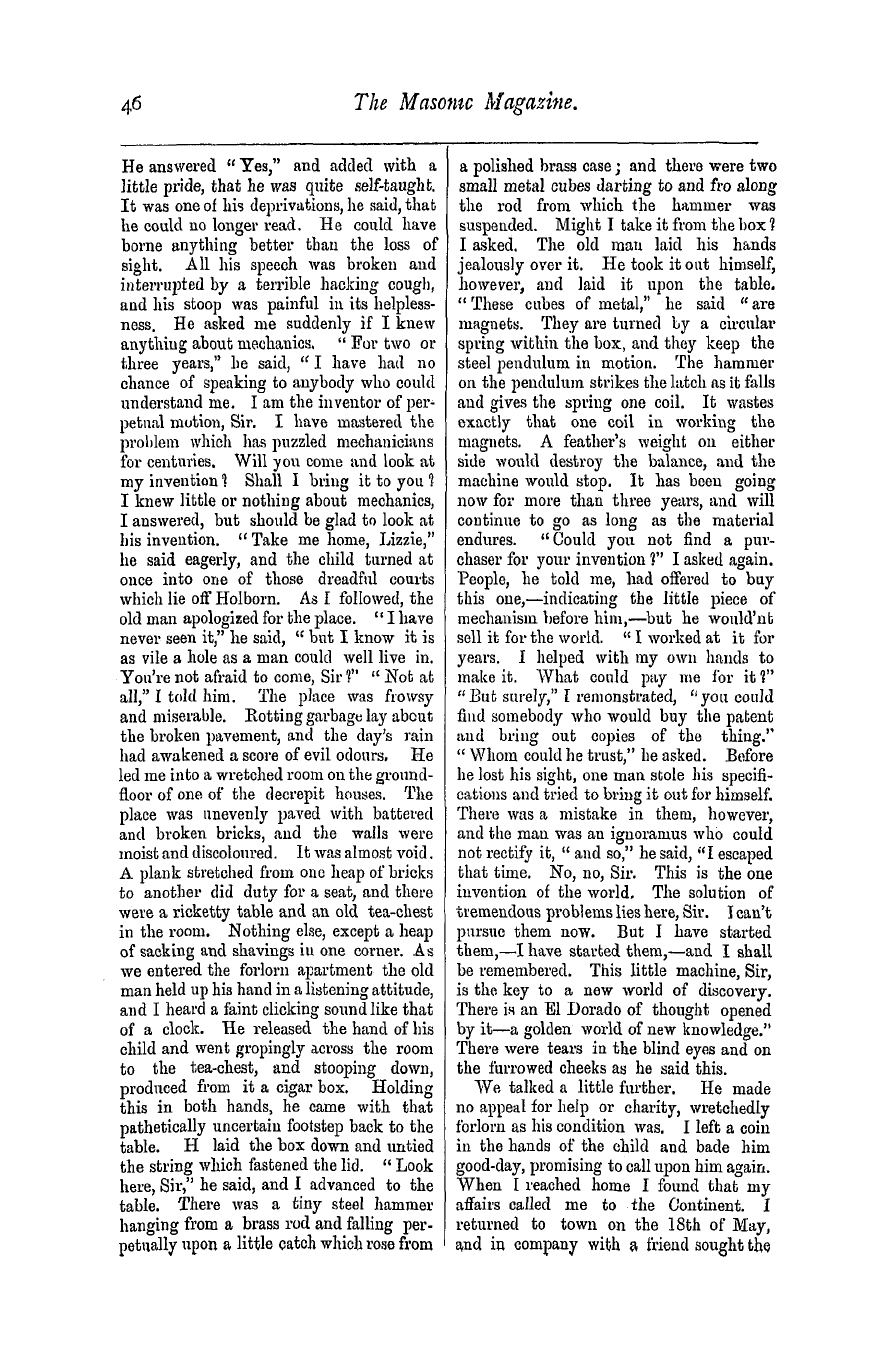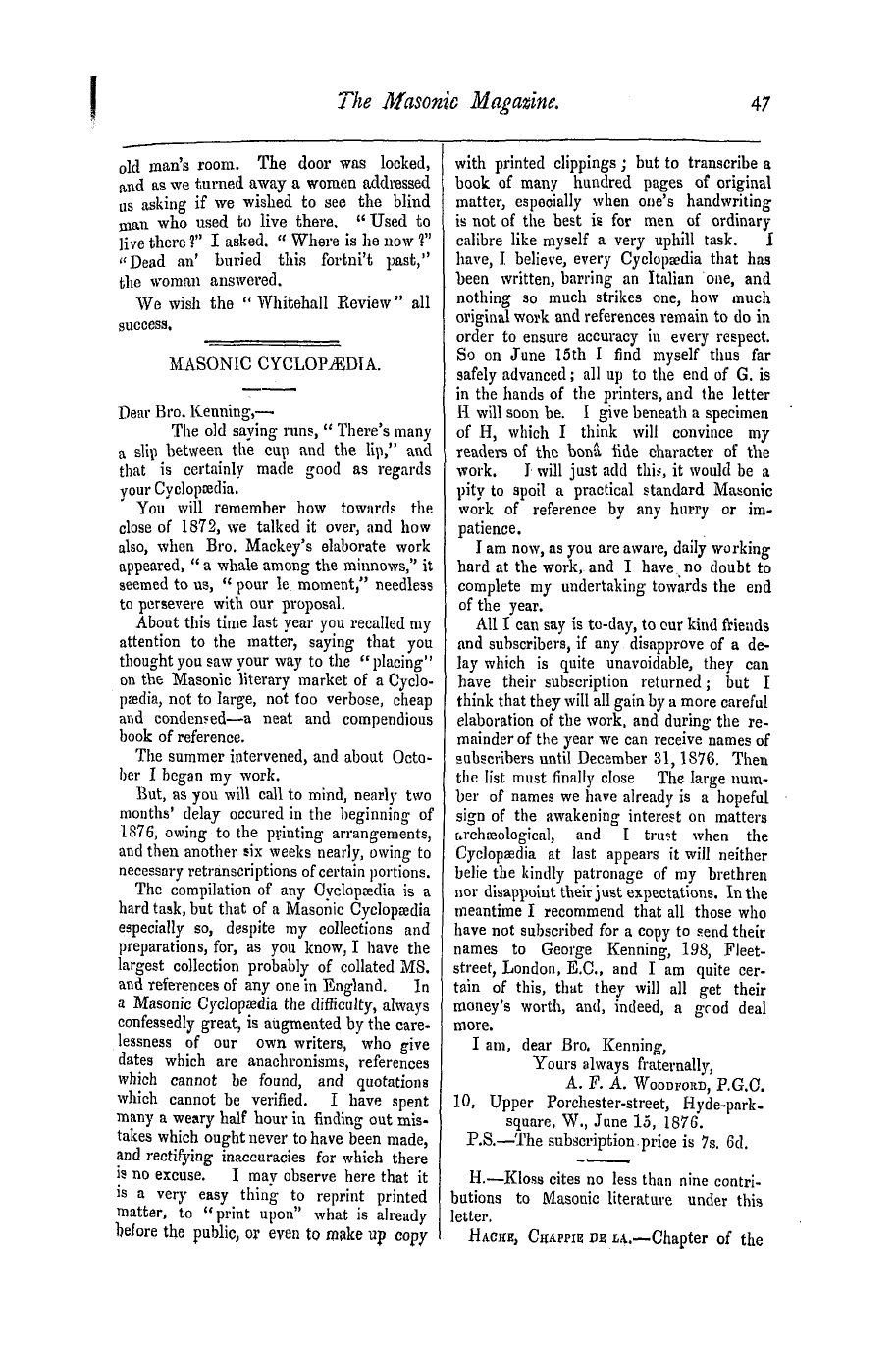Note: This text has been automatically extracted via Optical Character Recognition (OCR) software.
The Origin And References Of The Hermesian Spurious Freemasonry.
a legitimate Santic cross . The hand-plough was indeed the ancient sceptre of kings , as well as the symbol of authority amongst the priests . Thus Dr . Clark says , * " this curious relic preserves a model of one of the most ancient instruments of agriculture known in the world ; the primeval plough
of Egypt and of the Eastern world , held in veneration from the earliest ages , and among all nations , considered a sacred symbol , an emblem of power and dignity , a sceptre fit for kings , and even gods to weara type of natures bounty , and of
, peace on earth . To the invention of the plough may be referred all the mysteries of Ceres , and many of the most sacred solemnities , the rites and the festivals of ligypt and Greece . " The Crux Ausata of Hermes is
represented by ancient writers , not only as a most sublime hieroglyphic , but also as a mysterious and powerful amulet , endowed with astonishing virtues . It exhibits one of the most complete mathematical figures , " habentem longitudinem atque latitudinen , et quatuor angulos rectos , possessing at once both length and breadth , and
having four right angles , at once allusive to the four cardinal points of the world , and typical of the four elements . "t This symbol was ultimately used as a letter of the Egyptian alphabet , and called Gaut . It corresponded with the Hebrew Gau ,
though different in shape ; but its mystical signification was the same . The crux ausata was however formed by a combination of the cross and circle , or , as they were considered by the heathen , 'their two greatest deitiesthe hallus and the sun ;
, p and assumed this form £ . Ultimately the lunette or rising moon was added to the compound symbol , and completed the hieroglyphic which constituted the true representative of Hermes or Mercury thus , $ and to perpetuate the honour which was
desi gned to be conferred on this great benefactor to the human species , he was identified with the planet which revolves nearest the sun . The Hermetic cross signified also an Ear of Corn , and as corn was one of the productions of Mother Earth , which conferred unbounded blessings on man , the Spica , or & u-, had a phallac reference to Isis , the
goddess of reproducu « i ^ O ©»> auundance ; as well as to Oucph ; ancTismit only found on coins , engraven in Kircher and Montfaucon , as an hieroglyphic of the deity , but forms the characteristic of many others . And it may be remarked here that at the initiation of an individualhe was usually
, marked with the cross , in common with any other symbol of the deity , into whose peculiar service he had now formerly enlisted .
The stigma or mark of the newly initiated member of the Dionysiaca , was a sprig of ivy , as the symbol of Bacchus ; and it was by this mark that Ptolemy Philopater determined to force upon the Jews in Egypt the acceptance of his religion . * In India criminals were branded with an
indelible mark to denote the nature of their crime , one of which was the yoni . The ordinances of Menu prescribe the peculiar mark by which each fault was distinguished . "For drinking spirits , a vintner ' s flag ; for stealing sacrecl gold , a dog ' s foot ; for murdering a priest , the figure of a headless corpse ; & c . And they were condemned to wander over the face
of the earth branded with these marks , that they might be deserted by friends , treated by none with kindness , and received by none with respect . " With the above interpretation of the symbol before us , the Egyptian Isis may be identified with the Philistine Dagonwhich signifies either
, fish or corn . ¦ ' Hence Philo Byblius , the Greek translator or Sanckoniatho , explains Dagon as being also Siton . Ceres or Isis , or the ark , was the goddess of corn , because she preserved the stock requisite for the sowing of the new world ; and asunder
, the name of Atargatis or Adar , Daga , or Derceto , she was likewise a mermaid ; so Noah , or the merman Dagon , was likewise Siton , or the god of corn or agriculture . "t In a word , although the god Dagon is
represented in our scriptures as a male , it was depicted at Tyre and Ashdod as a female with the lower part of a fish ; and in Syria , as a female throughout ; and she was designated by the same symbol as Isis , viz ., a lunette . As Isis and Ceres were the same deity in different nations , so the Hermetic cross
Note: This text has been automatically extracted via Optical Character Recognition (OCR) software.
The Origin And References Of The Hermesian Spurious Freemasonry.
a legitimate Santic cross . The hand-plough was indeed the ancient sceptre of kings , as well as the symbol of authority amongst the priests . Thus Dr . Clark says , * " this curious relic preserves a model of one of the most ancient instruments of agriculture known in the world ; the primeval plough
of Egypt and of the Eastern world , held in veneration from the earliest ages , and among all nations , considered a sacred symbol , an emblem of power and dignity , a sceptre fit for kings , and even gods to weara type of natures bounty , and of
, peace on earth . To the invention of the plough may be referred all the mysteries of Ceres , and many of the most sacred solemnities , the rites and the festivals of ligypt and Greece . " The Crux Ausata of Hermes is
represented by ancient writers , not only as a most sublime hieroglyphic , but also as a mysterious and powerful amulet , endowed with astonishing virtues . It exhibits one of the most complete mathematical figures , " habentem longitudinem atque latitudinen , et quatuor angulos rectos , possessing at once both length and breadth , and
having four right angles , at once allusive to the four cardinal points of the world , and typical of the four elements . "t This symbol was ultimately used as a letter of the Egyptian alphabet , and called Gaut . It corresponded with the Hebrew Gau ,
though different in shape ; but its mystical signification was the same . The crux ausata was however formed by a combination of the cross and circle , or , as they were considered by the heathen , 'their two greatest deitiesthe hallus and the sun ;
, p and assumed this form £ . Ultimately the lunette or rising moon was added to the compound symbol , and completed the hieroglyphic which constituted the true representative of Hermes or Mercury thus , $ and to perpetuate the honour which was
desi gned to be conferred on this great benefactor to the human species , he was identified with the planet which revolves nearest the sun . The Hermetic cross signified also an Ear of Corn , and as corn was one of the productions of Mother Earth , which conferred unbounded blessings on man , the Spica , or & u-, had a phallac reference to Isis , the
goddess of reproducu « i ^ O ©»> auundance ; as well as to Oucph ; ancTismit only found on coins , engraven in Kircher and Montfaucon , as an hieroglyphic of the deity , but forms the characteristic of many others . And it may be remarked here that at the initiation of an individualhe was usually
, marked with the cross , in common with any other symbol of the deity , into whose peculiar service he had now formerly enlisted .
The stigma or mark of the newly initiated member of the Dionysiaca , was a sprig of ivy , as the symbol of Bacchus ; and it was by this mark that Ptolemy Philopater determined to force upon the Jews in Egypt the acceptance of his religion . * In India criminals were branded with an
indelible mark to denote the nature of their crime , one of which was the yoni . The ordinances of Menu prescribe the peculiar mark by which each fault was distinguished . "For drinking spirits , a vintner ' s flag ; for stealing sacrecl gold , a dog ' s foot ; for murdering a priest , the figure of a headless corpse ; & c . And they were condemned to wander over the face
of the earth branded with these marks , that they might be deserted by friends , treated by none with kindness , and received by none with respect . " With the above interpretation of the symbol before us , the Egyptian Isis may be identified with the Philistine Dagonwhich signifies either
, fish or corn . ¦ ' Hence Philo Byblius , the Greek translator or Sanckoniatho , explains Dagon as being also Siton . Ceres or Isis , or the ark , was the goddess of corn , because she preserved the stock requisite for the sowing of the new world ; and asunder
, the name of Atargatis or Adar , Daga , or Derceto , she was likewise a mermaid ; so Noah , or the merman Dagon , was likewise Siton , or the god of corn or agriculture . "t In a word , although the god Dagon is
represented in our scriptures as a male , it was depicted at Tyre and Ashdod as a female with the lower part of a fish ; and in Syria , as a female throughout ; and she was designated by the same symbol as Isis , viz ., a lunette . As Isis and Ceres were the same deity in different nations , so the Hermetic cross










































